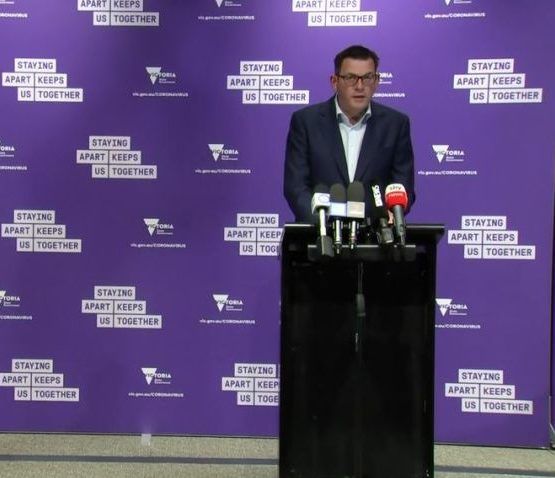
Unfortunately, Melburnians have returned to stage 3 restrictions after an increase in the number of COVID-19 cases since the middle of June 2020. This step backwards was disappointing, but necessary. Every day, Australians await state Premiers’ announcements on the number of new cases. The cumulative cases graph is no longer that pretty, but hopefully the stay-at-home efforts will be noticeable in the upcoming weeks.
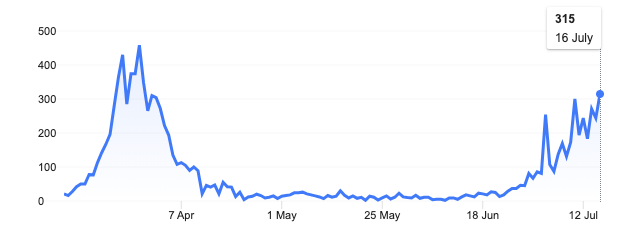
Graph source: Wikipedia. Shows total new cases in Australia from 10th May 2020 to 16th July 2020.
In previous blog posts, we reported that media coverage on COVID-19 matched the infections spike from back in March–April time. When there was an increase in infections, there was also an increase in media coverage on the virus. It was all our media could talk about.
Media Exposure represents the cumulative daily number of news articles published including a specific key word. Using our media monitoring software Meltwater, we looked at the Media Exposure for articles containing ‘COVID-19’ / ‘coronavirus’ in print / online media from 10th March 2020 to 25th May 2020. Late May was around the time restrictions started being relaxed and we were able to have five people at our home in Victoria. A thrilling time in comparison to March and April!
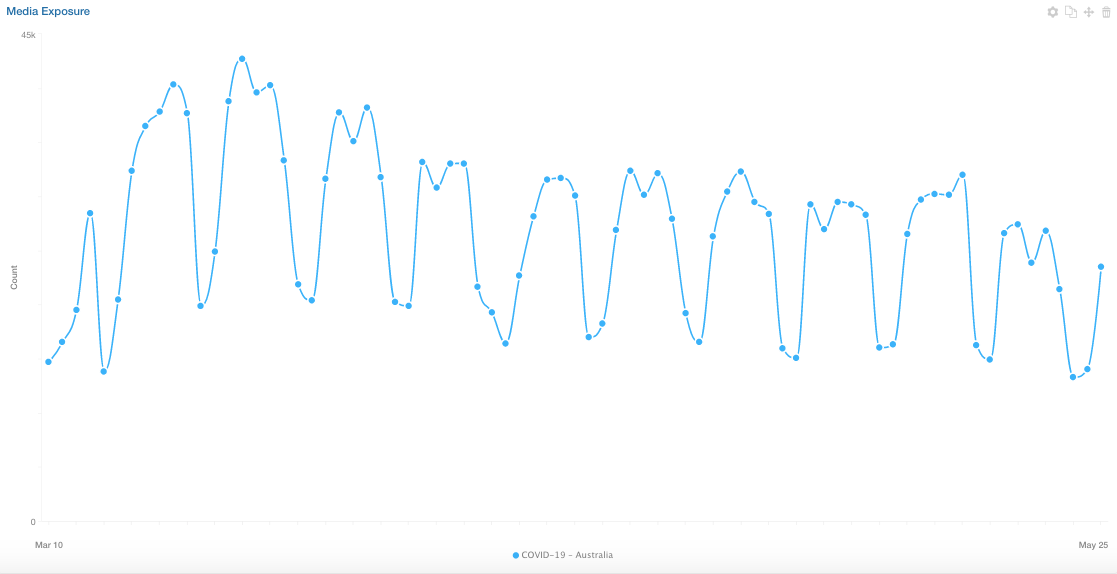
This might not look that striking, so let’s look at the same graph from 1st January 2020, before COVID-19 was part of our vocabulary. Now, the ‘spike’ in media coverage is easier to see.

Note: The regular dips every five days represent the weekends, when there are fewer staff in newsrooms and more room for feel-good news stories than scary pandemic stories. Read more.
The Media Exposure spike in late March and slow decrease is comparable to the COVID-19 cases graph below, which has been stopped at 25th May 2020. Sure, media is still reporting on COVID-19, but the coverage has plateaued. It would be wrong not to report on COVID-19 at all. It is an international issue, and even though the case numbers were low between mid-April and mid-June, the topic still deserves public attention.
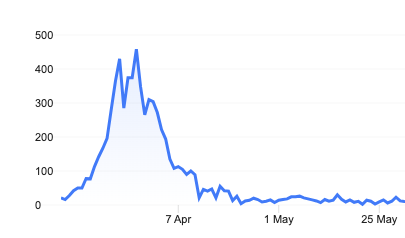
Here is a Media Exposure graph for ‘COVID-19’ / ‘coronavirus’ mentions in print / online media since 1st May 2020. The different lines represent four different Australian states (Victoria, New South Wales, Western Australia and South Australia).
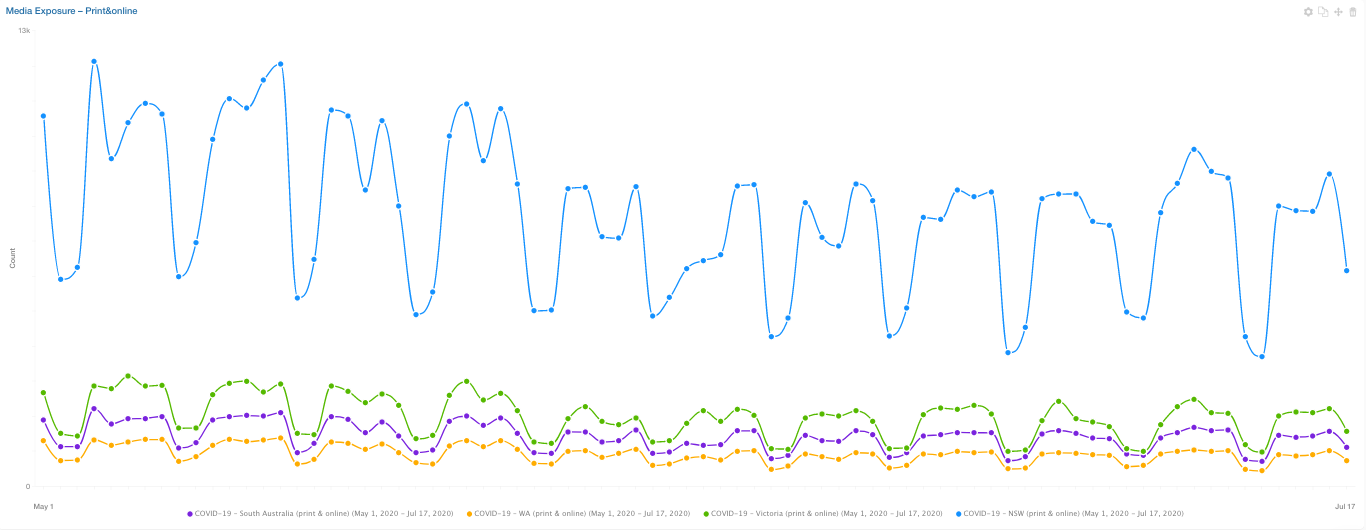
Note: The regular dips every five days represent the weekends, when there are fewer staff in newsrooms and more room for feel-good news stories than scary pandemic stories. Read more.
We were surprised by this Media Exposure graph for a couple of reasons. Before we go into that, take a look at the COVID-19 cases graph for the same timeframe below. The new increase is pretty obvious.
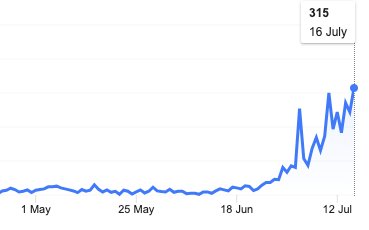
Interestingly, News Corp Australia (The Herald Sun and Daily Telegraph) topped the charts. Their Fairfax competition was much further down. In Victoria, The Age came fourth and the Sydney Morning Herald is not even in the top six for New South Wales. This could be explained by syndication. Syndicated news stories are shared between media outlets that are part of the same group (e.g. News Corp Australia owns both the Herald Sun and Geelong Advertiser). This is frequently seen on television; for instance 7 NEWS will share a news story captured by their crew in a metropolitan area with their regional counterparts.
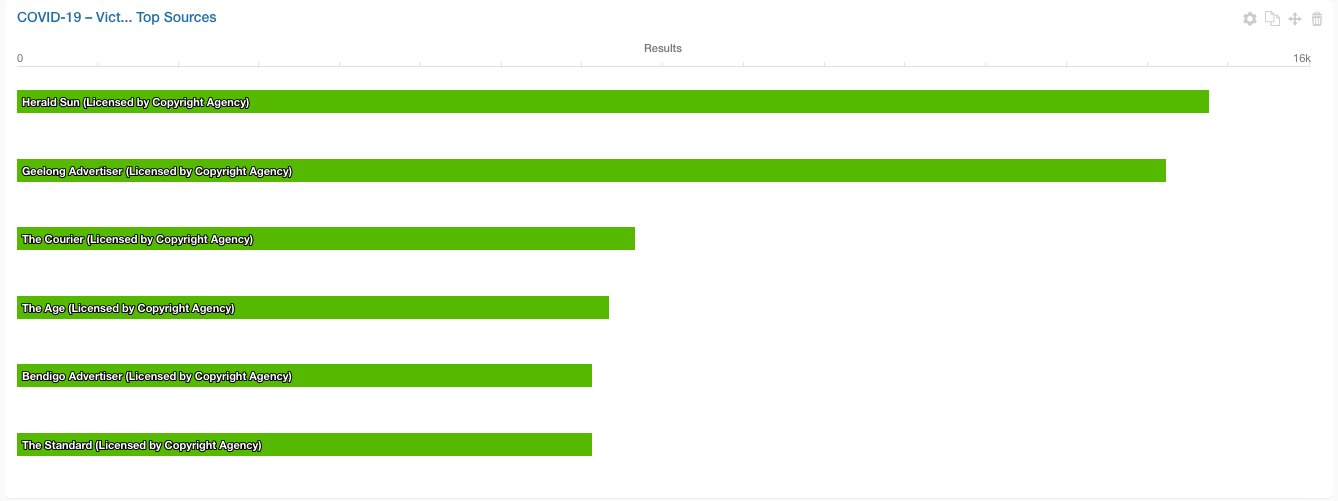
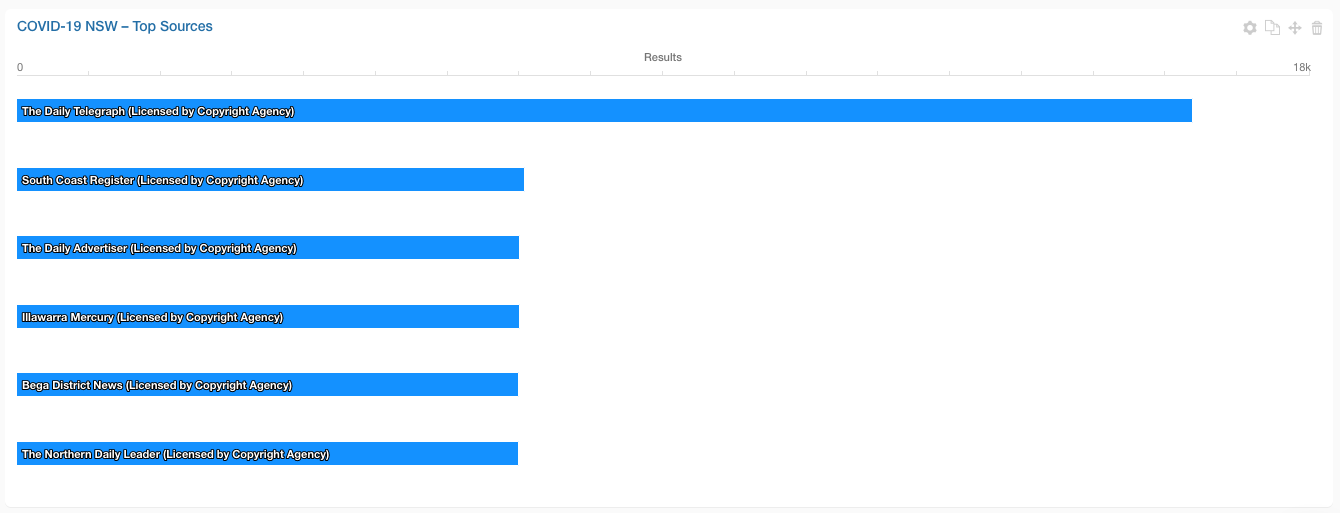
So maybe we will never see another huge spike in media coverage on COVID-19. The novelty news value may have worn off. Today’s COVID-19 news stories display different core news values than novelty. These other core news values are ensuring that the ever-plateauing volume of COVID-19 media coverage inundating our Twitter feeds doesn’t stop.
If you aren’t responsible for writing media releases or working with journalists, you probably have not heard of the core news values before. There are eight, and your news story does not need to include every single one (that would be one hell of a Venn diagram). However, these can help explain to the journalist why they should care about the news story.
COVID-19 has lost its novelty factor and journalists now have more time to focus on something different. Your health news story can capture their attention, as long as they feature a couple of these core news values.
Sign up to our weekly analyses and healthcare industry articles by getting in touch at: [email protected]